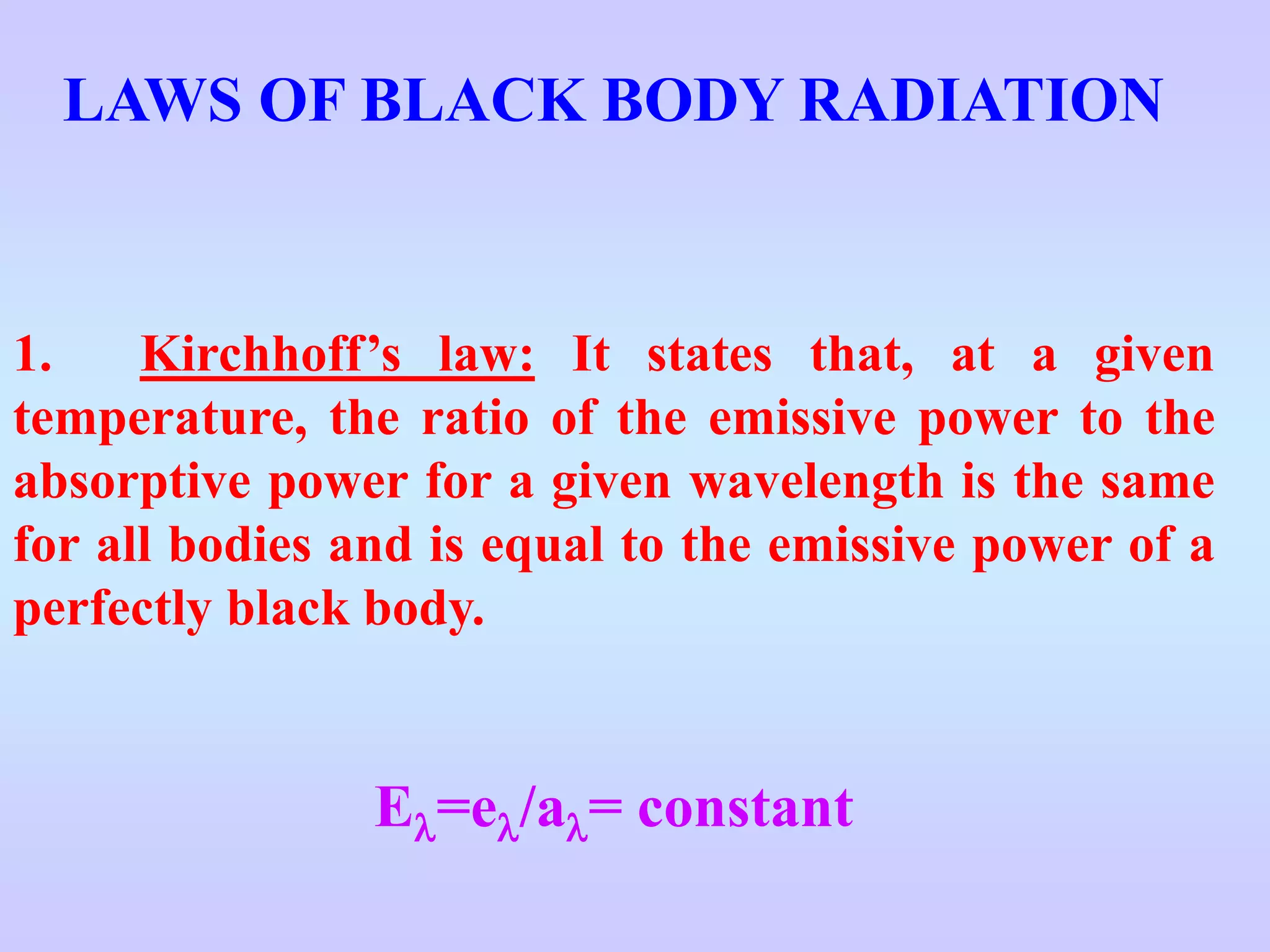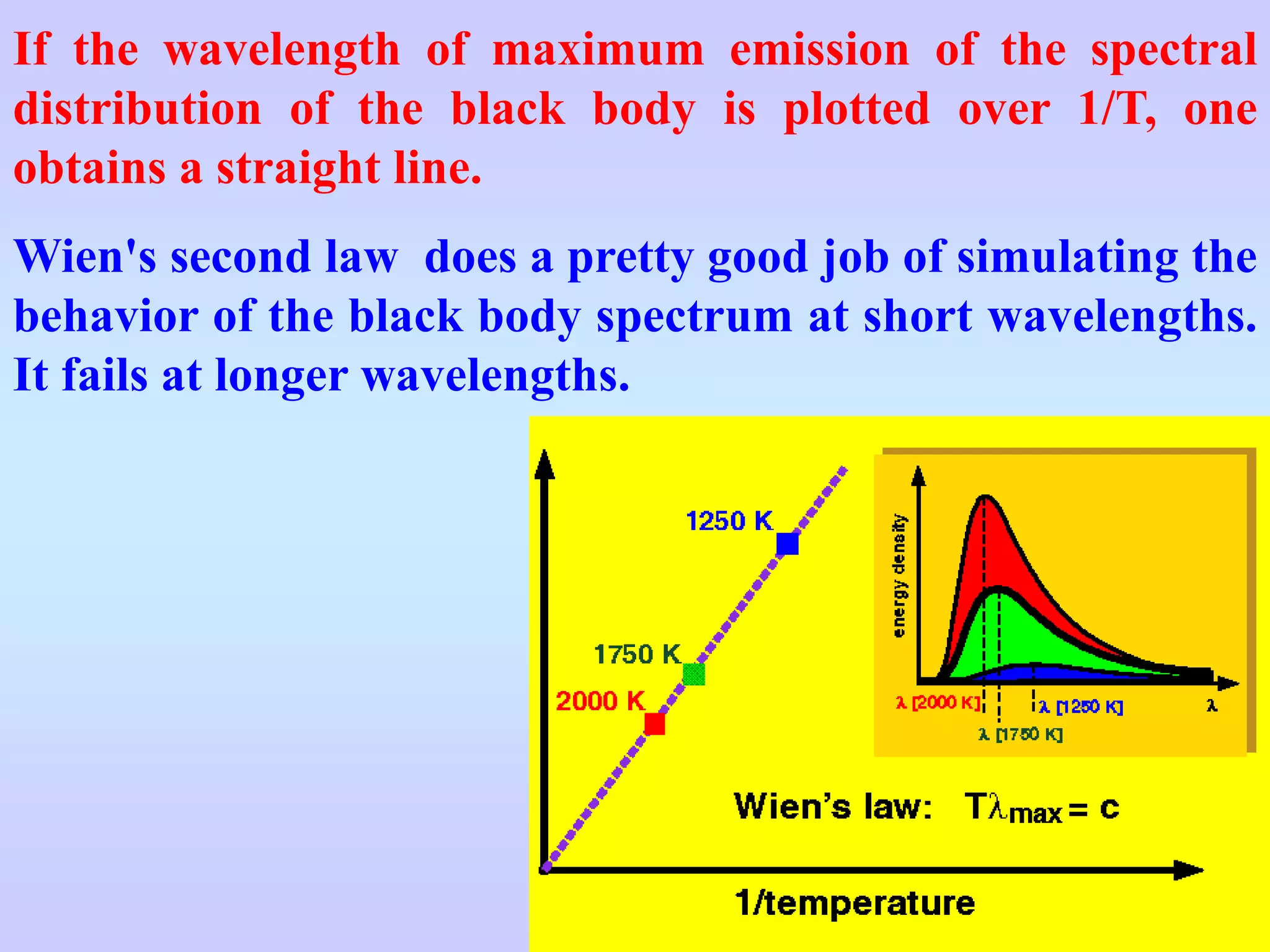1) Classical theories could not explain the spectrum of blackbody radiation, predicting infinite energy at short wavelengths.
2) Planck hypothesized that the oscillators could only emit or absorb energy in discrete quantized units proportional to frequency, avoiding the infinity.
3) This led to Planck's law of radiation, which correctly described the blackbody spectrum using a quantum of action hν. This founding of quantum theory resolved the ultraviolet catastrophe.













![Wein obtained an expression for the
monochromatic energy density within an
isothermal black body enclosure in the wavelength
and +d as
d = C1-5/ e C2/T d [Note: (c/4)=E]
where is the wavelength , T is absolute temperature.
This formula is essentially empirical and contains two
adjustable constants C1 and C2. By adjusting these two
constants Wein could explain the nature of black body
curves except at longer wavelengths.](https://image.slidesharecdn.com/1blackbody-211203075452/75/1-black-body-14-2048.jpg)














